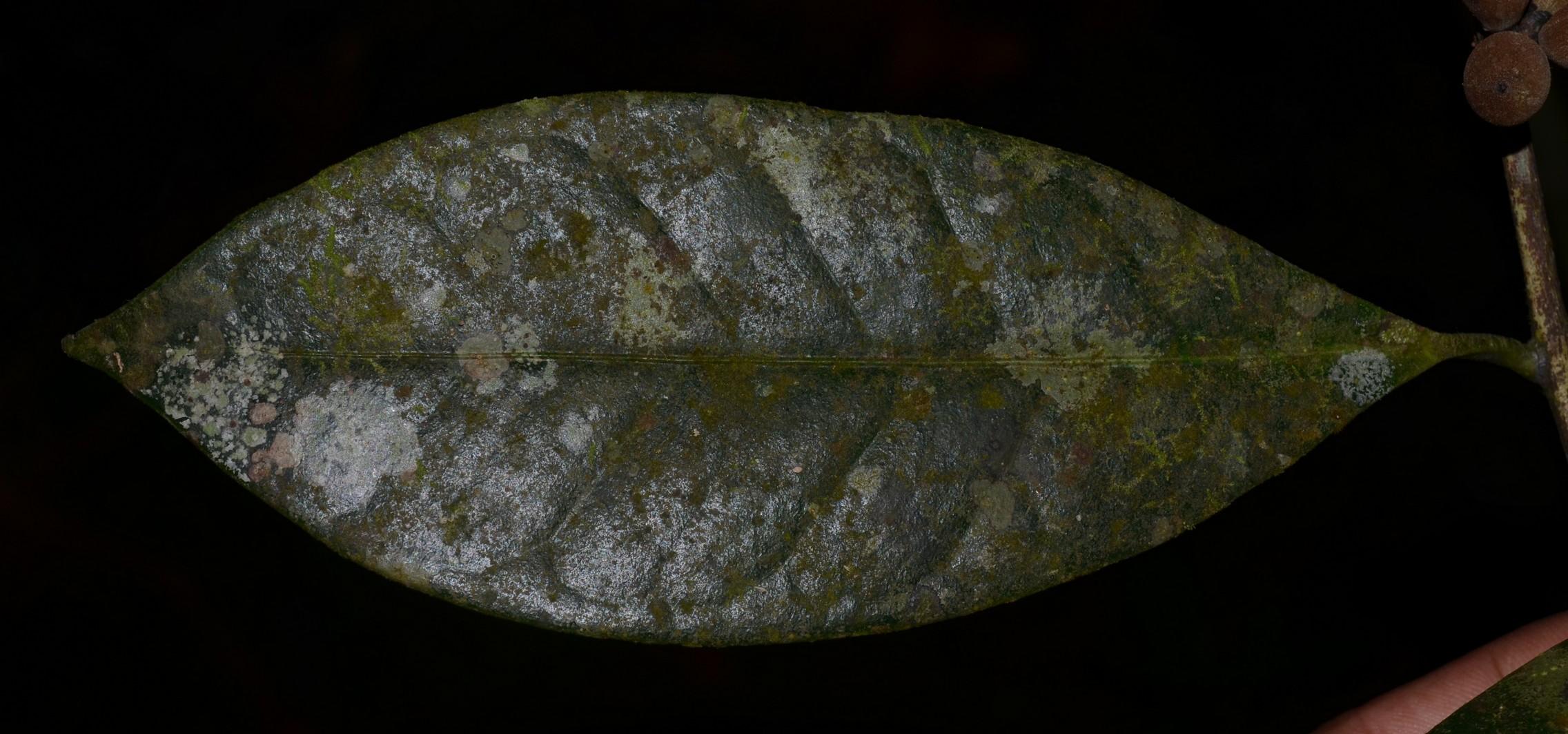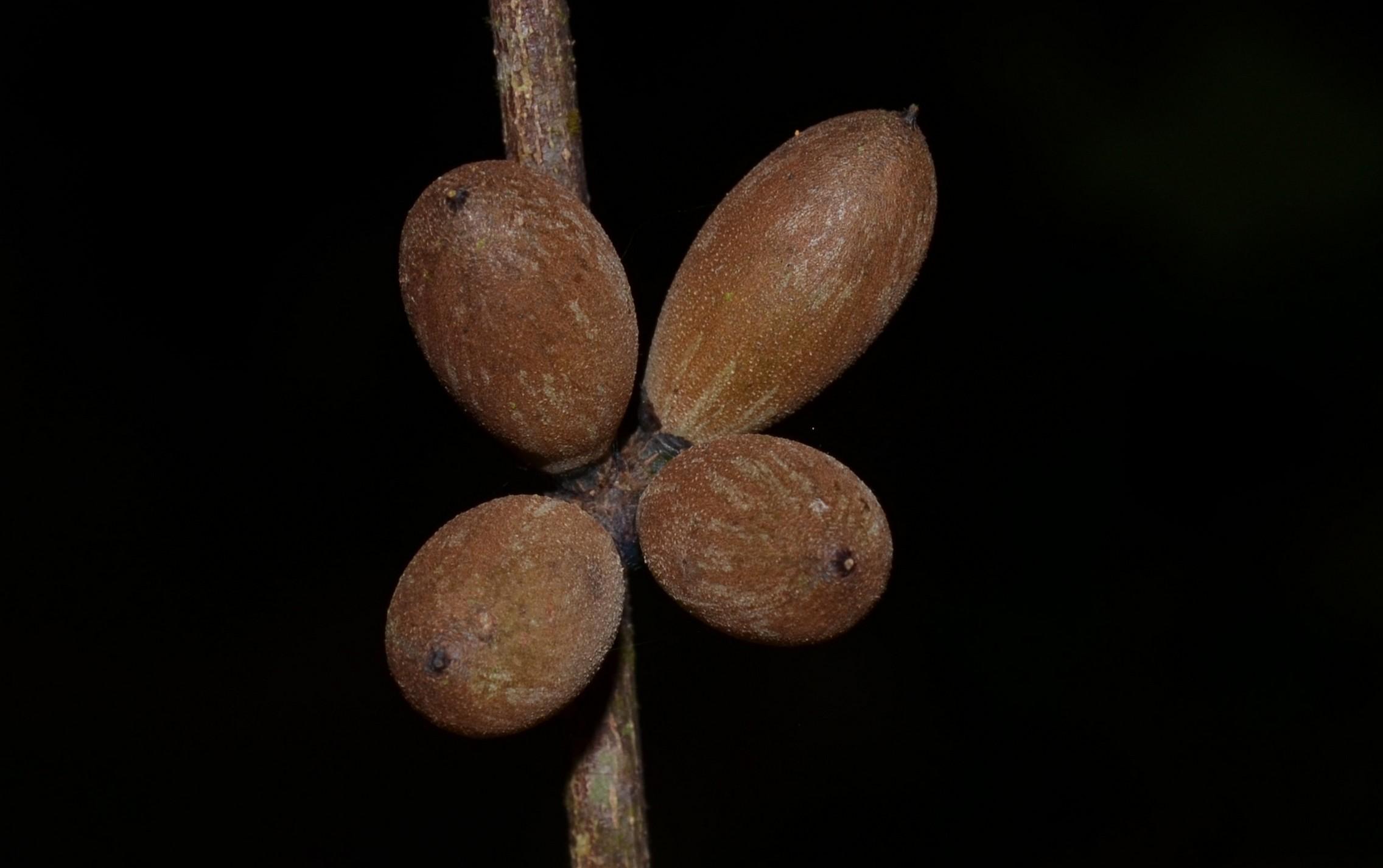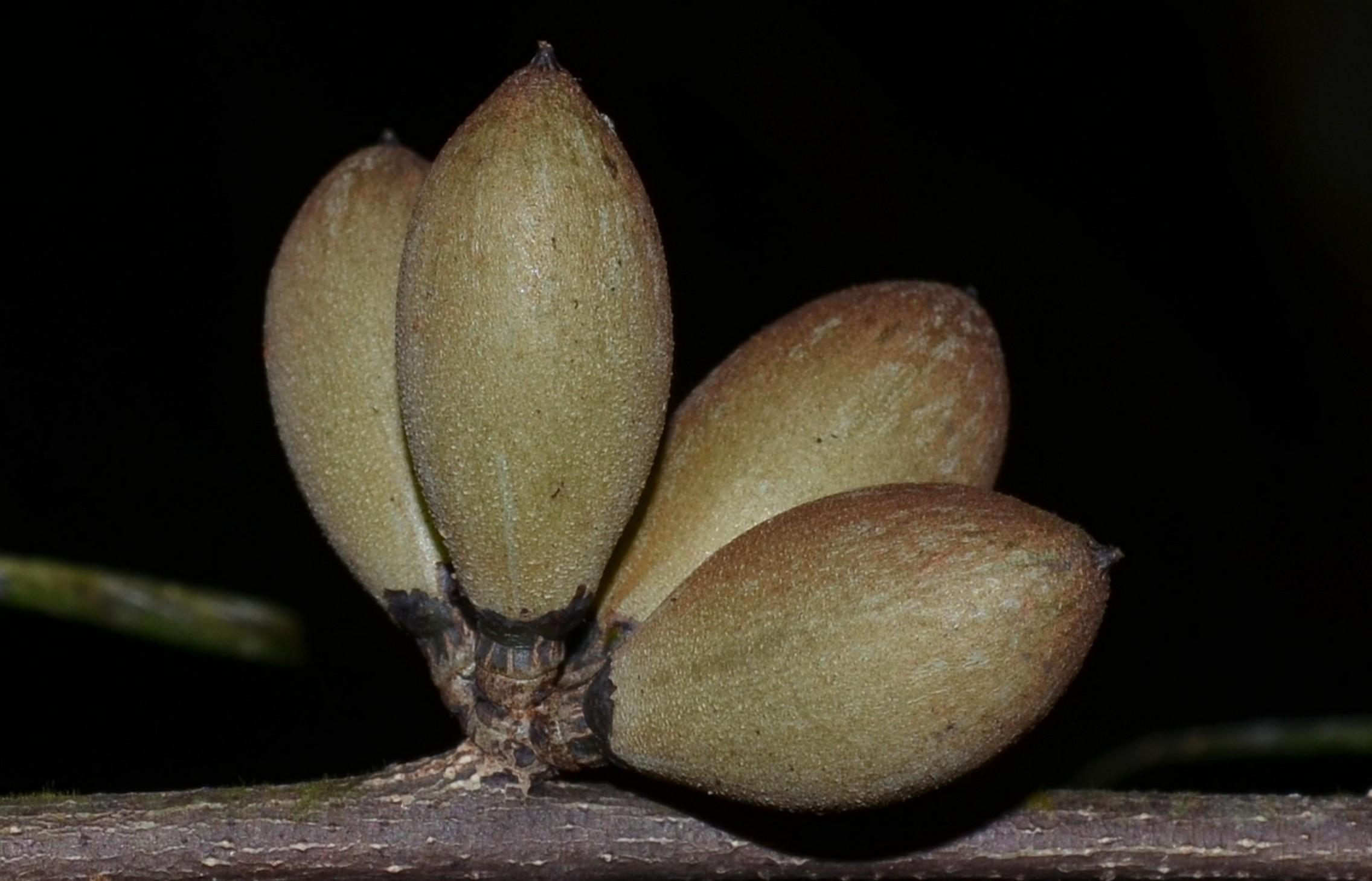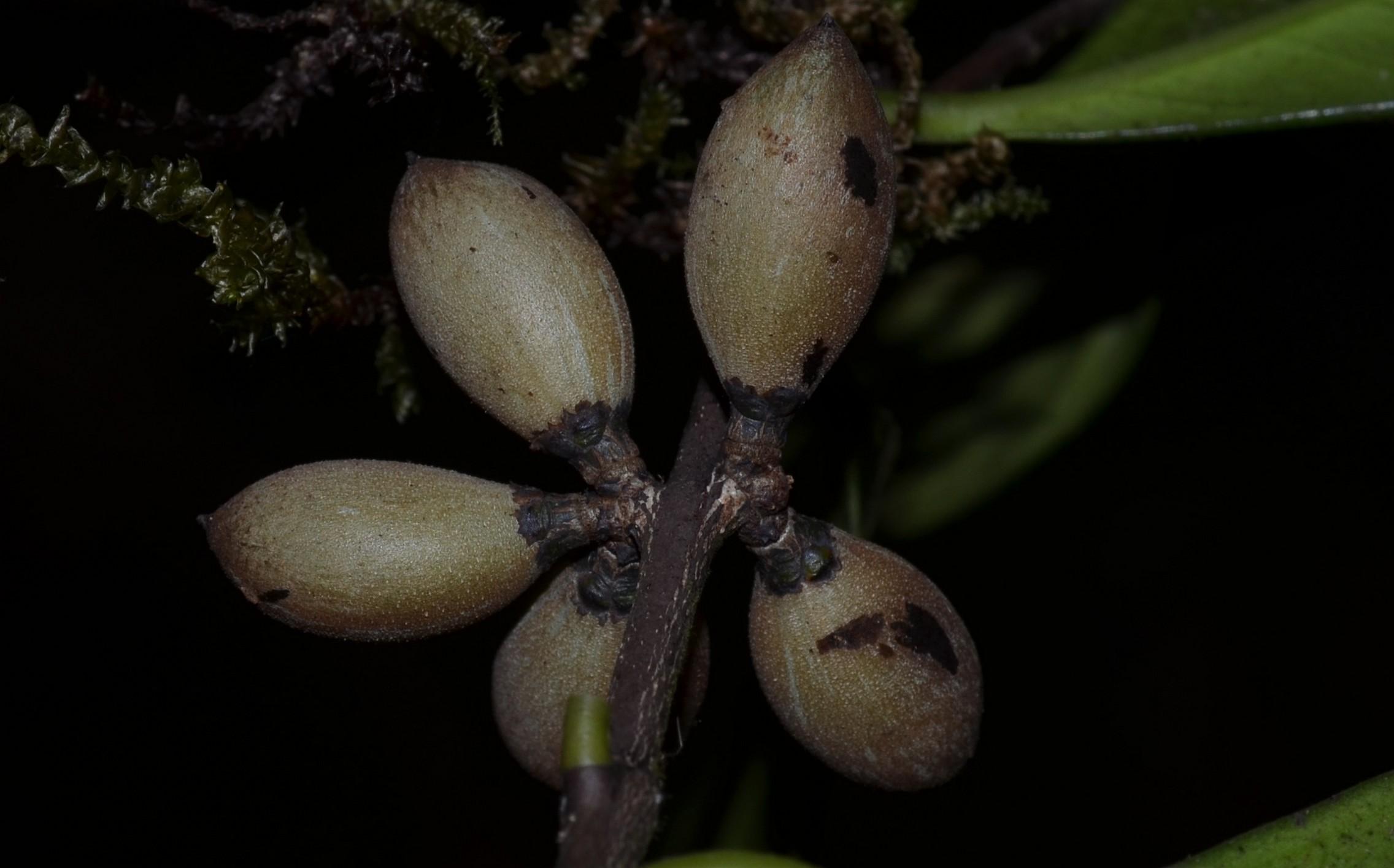|
Microtropis latifolia Wight ex M.A.Lawson, Fl. Brit. India 1: 613 1875.;
Habit- Small trees, up to 5 m tall. Branches and Branchlets- Branches terete, black-purple.
Leaves- Leaves simple, opposite to subopposite, decussate; petiole 0.5-1 cm long, canaliculate; lamina 7-15 x 2.5-6.5 cm, elliptic or oblong-lanceolate, acuminate, base acute to attenuate, margin entire, margins reflexed, pale beneath, glabrous, coriaceous; secondary nerves ca. 8 pairs, not prominent; tertiary nerves obscure.
Inflorescence / Flower- Flowers in sessile clusters, axillary.
Fruit and Seed- Capsule, ellipsoid, 1.5 cm long; 1-seeded
Understorey trees in medium elevation evergreen forests, between 700 and 1500m.
Endemic to the Western Ghats- Central Sahyadri (Palakkad hills, South Malanad and Central Malanad).
(Attributions- B. R. Ramesh, N. Ayyappan, Pierre Grard, Juliana Prosperi, S. Aravajy, Jean Pierre Pascal, The Biotik Team, French Institute of Pondicherry. from India Biodiversity Portal)
Date: 14th November 2015
Place: Agumbe, Shimoga District, Karnataka Habit: Shrub Habitat: Semi-evergreen forest next to a stream Can this be Microtropis stocksii Gamble or Microtropis latifolia Wight ex Lawson? Key to the other species can be found here.
Leaf shape in the Biotik page seems to match Microtropis latifolia Wight ex Lawson but I am not sure.
Yes …, I think you are right in thinking it to be M. latifolia.
… expressed his doubts about the ID of this plant. Perhaps it could be another genus entirely. I am at a loss for any further clues/suggestions. The fruit certainly looks like Microtropis. Wait until it open or try to tear the fruit open. Using the key in the hyperlink below one needs to see the venation prominent below, and the fruit are (very) slightly obovate. I am not so sure about leaves acute. These are all characters that could look differently once pressed References: The Plant List Ver.1.1 |
Disclaimer
1. For any mistake in identification or for becoming efloraofindia e-group member (for contributing towards building of efloraofindia or otherwise), pl. mail to indiantreepix@googlegroups.com or itpmods@googlegroups.com
2. For better viewing of species’ pages, colour scheme & formatting is being followed as: Description of the species, Details of other flora species on the same page, Uses/ harms, Distribution, Abundance/ Location/ Flowering time & date, Habit & habitat, Etymology & pronunciation, Other interesting information, stories etc., Others, Botanical names, Common names, Main point of discussion below, Discussion about Botanical names.
Navigation
- Award for eFloraofIndia
- Colour scheme & formatting
- Copyrights, Permissions, Citations
- eFloraofIndia appreciated
- Names of Plants in India site
- Flowersofindia site
- Posting Guidelines
- For members’ information
- Logo, Tagline, Acronym
- Volunteers required
- ‘Pitamah’ of eFloraofIndia
- ‘अजेय’ ‘Ajey’ of eFloraofIndia
- ‘Saarthi’ ‘सारथि’ of eFloraofIndia
- ‘Jewel’ of eFloraofIndia
- ‘Grassman’ of eFloraofIndia






